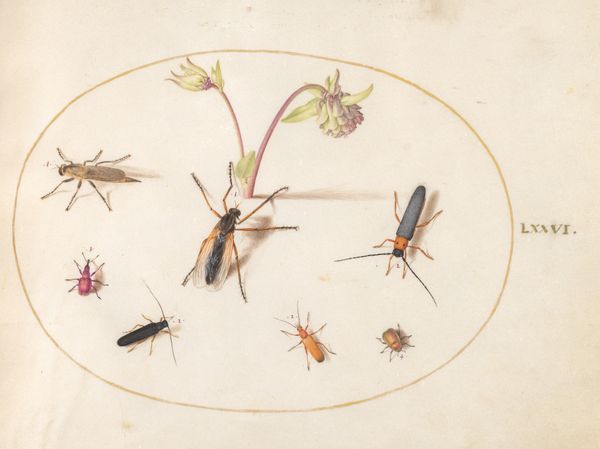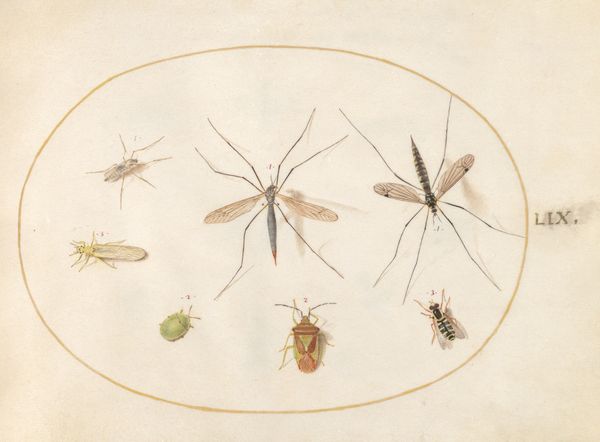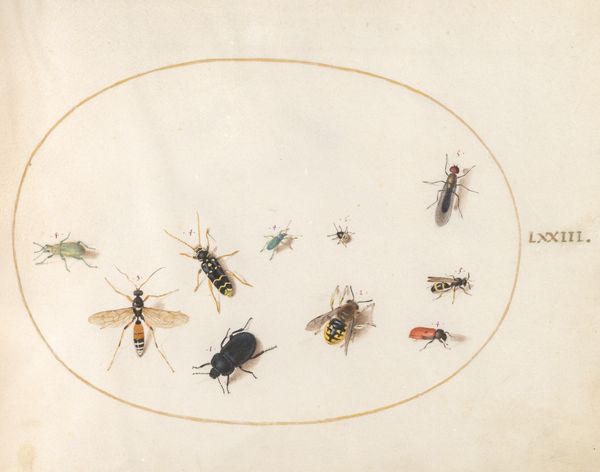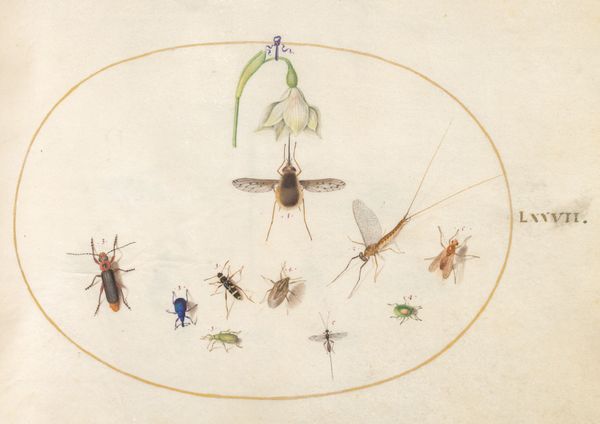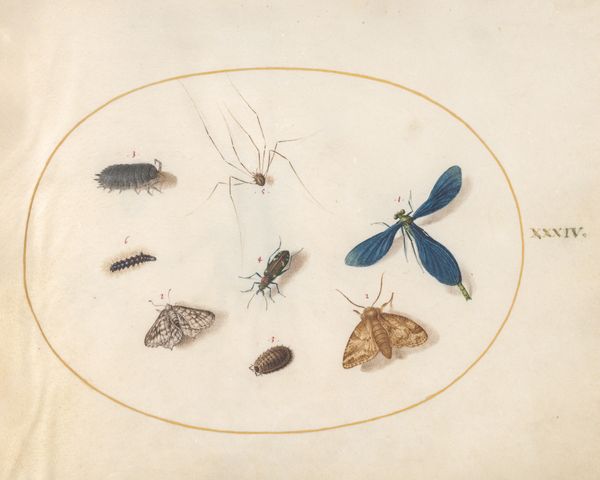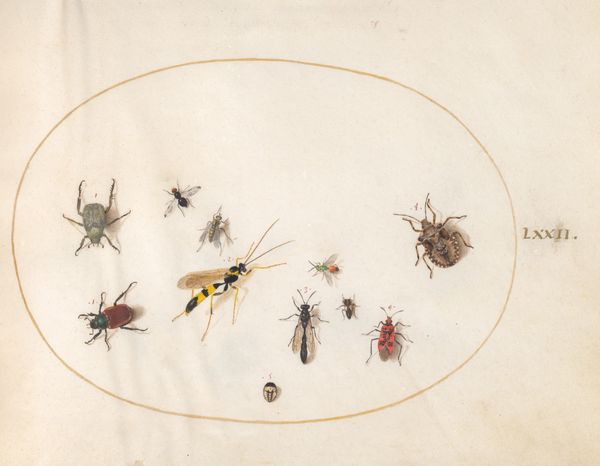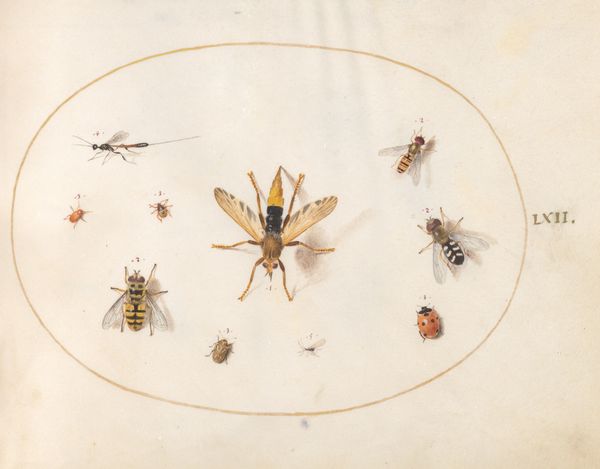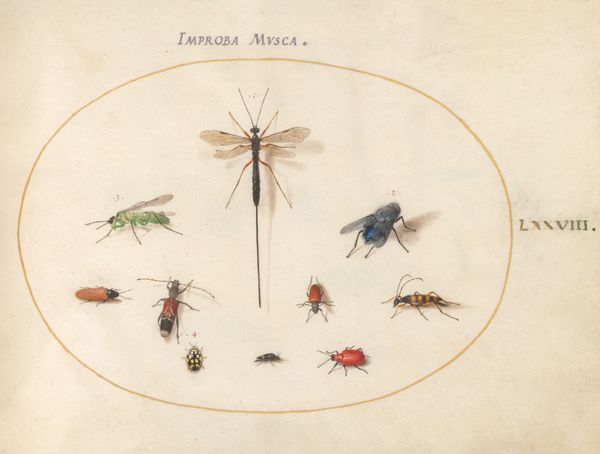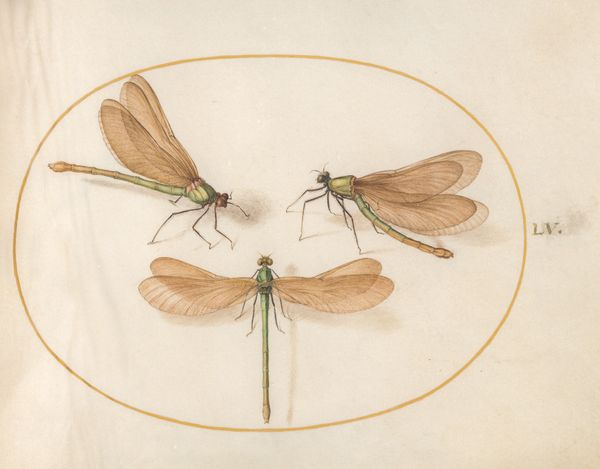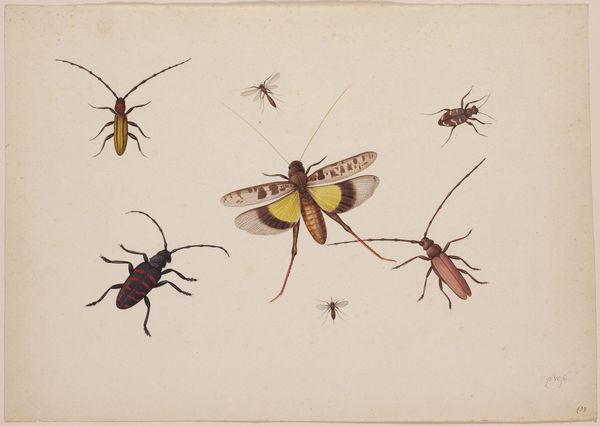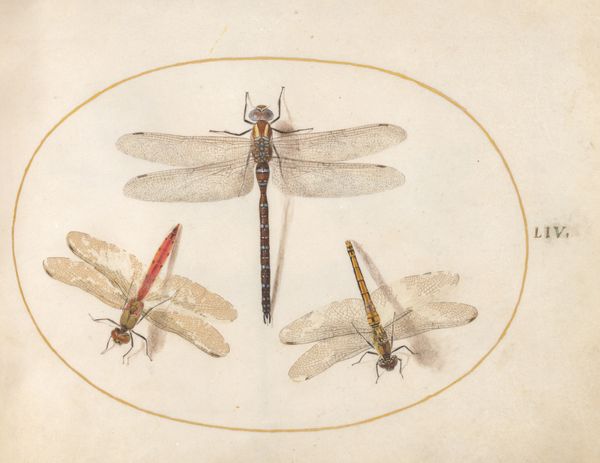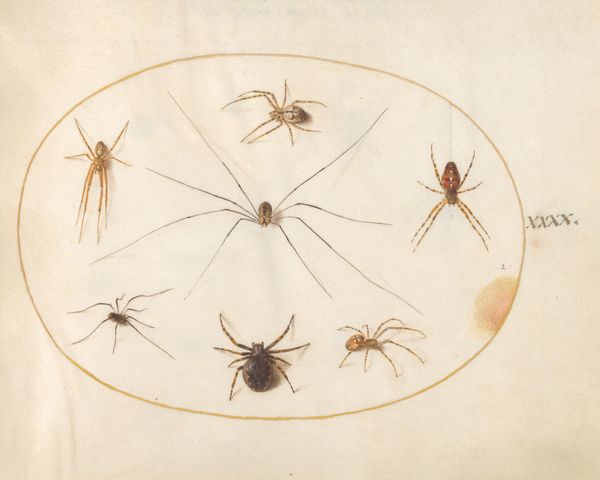
Plate 57: A Ladybug, a Fly, and Four Other Insects c. 1575 - 1580
0:00
0:00
drawing, watercolor
#
drawing
#
mannerism
#
watercolor
#
watercolour illustration
#
watercolor
Dimensions: page size (approximate): 14.3 x 18.4 cm (5 5/8 x 7 1/4 in.)
Copyright: National Gallery of Art: CC0 1.0
Curator: Here we have "Plate 57: A Ladybug, a Fly, and Four Other Insects," a watercolor drawing by Joris Hoefnagel, created circa 1575 to 1580. It's a stunning example of Mannerist art. Editor: Immediately, I’m struck by the almost photographic realism, especially considering the time. But at the same time, it feels like more than just a scientific study; it's stylized, the insects meticulously arranged. There's a definite design element at play. Curator: Absolutely. Hoefnagel wasn’t merely documenting nature; he was part of a larger artistic and intellectual movement. During the late 16th century, detailed natural studies became fashionable among aristocratic circles, and artists like Hoefnagel supplied their demand. Think about the context— the rise of scientific observation coinciding with highly stylized art. Editor: And the symbolism! Each insect carries cultural baggage. The ladybug, a symbol of good luck, contrasting with, say, the fly, often associated with decay or the fleeting nature of life. The tension between the scientific accuracy and these deeper symbolic meanings is fascinating. Curator: Consider how Hoefnagel positions these creatures. Notice how the arrangement almost hints at an artificial hierarchy, which reflects the hierarchical worldview of the era. Moreover, he also contributed to the natural history albums for Emperor Rudolf II’s famed collections, a perfect illustration of patronage shaping artistic expression. Editor: I am intrigued by the selection of insects here. What did they represent in 16th century consciousness? Why these particular ones over, say, butterflies or beetles? The arrangement gives the viewer a sense that these insects could have special spiritual meaning for the artist and perhaps people from the period. Curator: Precisely! And the very act of isolating and portraying these insects in such detail speaks to a shifting perception of the natural world. From objects of daily experience to objects of artistic and scientific curiosity. The details about the Emperor also shed a light on the role that the political climate had on the work itself. Editor: Looking closely, you notice Hoefnagel wasn’t just presenting these insects; he was interpreting them through the symbolic language available to him. It feels like a portal into the past, where nature was viewed through a different lens of symbolism and meaning. Curator: It serves as a reminder that the way we depict the natural world always carries layers of cultural meaning, often reflecting both our scientific knowledge and the ideologies we carry. Editor: Exactly, I can see this image continuing to carry symbolic significance. Perhaps we can re-interpret it in our contemporary framework.
Comments
No comments
Be the first to comment and join the conversation on the ultimate creative platform.
